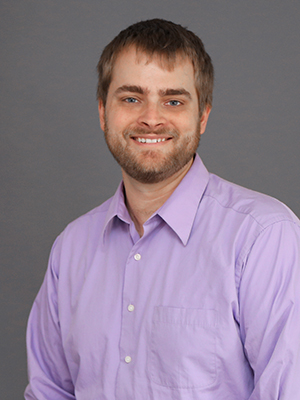Blending science and art in research
Passionate about visualizing the intrinsic beauty of scientific phenomena, Assistant Professor Daniel M. Harris melds the realms of art and science to aid in understanding fluid mechanics.
 Capturing a liquid droplet mid-bounce across the surface of a vibrating bath makes for strikingly beautiful art. It also became the basis for an award-winning photograph for one of Brown Engineering’s newest faculty members.
Capturing a liquid droplet mid-bounce across the surface of a vibrating bath makes for strikingly beautiful art. It also became the basis for an award-winning photograph for one of Brown Engineering’s newest faculty members.
The artwork, although secondary to Dan Harris’ experimentations in the lab, serves a valid purpose in his research. “Often, it’s a great start in the conversation,” he said. “Technical terms are not always the best way to begin.” Harris’ scientific and technical expertise is in fluid mechanics, interfacial phenomena, microfluidics, and nonlinear systems. The photographs he takes, like that droplet bouncing indefinitely on the surface of a vibrating fluid bath, and the localized field of waves excited by the droplet, illustrate and serve as an introduction to the work he does in his lab. A self-described amateur photographer, he is a regular contributor to the American Physical Society’s Gallery of Fluid Motion, a visual record of the aesthetic and science of contemporary fluid mechanics.
A native of North Carolina, Harris joined the School of Engineering faculty in the fall of 2017 as an assistant professor. For now, he is borrowing a small section of Professor Kenny Breuer’s lab, while he actively recruits both undergraduate and graduate students as partners in research for several on-going projects. Later this spring, he will move into the new Engineering Research Center into his own space with all the utilities he needs. “It is very exciting to design the layout of a brand new lab,” he said. “I got the experience of helping design my advisor’s new lab workspace at MIT, but then I graduated and never actually got to work in it.
“At MIT, and also as an undergrad at Cornell, I had a lot of success getting in on the ground floor. I’m excited to share similar experiences at Brown. There will be opportunity for students to help define this lab,” he said.
A few of the projects he will be working on include a collaboration with the University of Bath on theoretical models of the droplet on the fluid bath, investigating vibrating fluids, wave-patterning and the complex structures formed by those waves. Another includes the engineering physics behind vibrating granular materials, and simplified models for the transport of such materials. Harris’ postdoctoral researcher, Giuseppe Pucci, arrived in November, and now the group is ready to take advantage of the open, collaborative space in the Engineering Research Center. Harris could not be more excited about this vision.
“While I was at Chapel Hill, I happened upon the chance to collaborate with biomedical engineers,” he said. “A group there was working to improve a cell-sorting device, but needed help with the mathematical model to explain their observations. I have an engineering and an applied math background. I helped them with one small scale part, but working together was truly enlightening for all of us. I took the piece that made sense to me, and it helped bring them context.
Crossing boundaries is fruitful, people just don’t do enough of it in general, and it is one of the things I really liked about the space and Brown. For grad students to share is healthy. Not to mention, it’s an aesthetically beautiful building!
“This fits with how I like to teach and research. ‘What are the relevant components? What are the most important things?’ There is a temptation to throw it all in together and see what comes out, but if you can tease out the physical processes underneath, you can make a predictive model that we can learn from and can guide the development of such technologies. Problems are more accessible when you come at it from different backgrounds and viewpoints.
“Crossing boundaries is fruitful, people just don’t do enough of it in general, and it is one of the things I really liked about the space and Brown. For grad students to share is healthy. Not to mention, it’s an aesthetically beautiful building!”
Harris earned his mechanical engineering degree from Cornell in 2010, focusing on thermo-fluids engineering, and his Ph.D. in physical applied mathematics from MIT in 2015. His undergrad experiences at Cornell, and particularly with the Formula Society of Automotive Engineers, helped shape much of his outlook on what undergraduate research and learning should be. He is excited to work with Brown’s FSAE car team as co-advisor with Chris Bull, Director of the Brown Design Workshop.
Meanwhile, in his lab, pictures of his research taken with off-the-shelf cameras and tripods set up throughout his lab will continue to augment his technical explanations.
“My family is rather artistic,” he said, as he pulled down 6" x 6" tiles, covered in a fabric print inspired by his own research. “My sister designed and made these to decorate my office. I also have a tie in the same pattern, sewn by my mom.” The pattern is an artistic take on a counter-rotating vortex pair in ground effect, part of an award winning entry in the Gallery of Fluid Motion from 2009.
“I’m sure this is how the photographs have figured so prominently into my work. Moving forward, I hope to be able to do more outreach to the community, using that medium to engage the public on complex scientific discoveries through these images.”